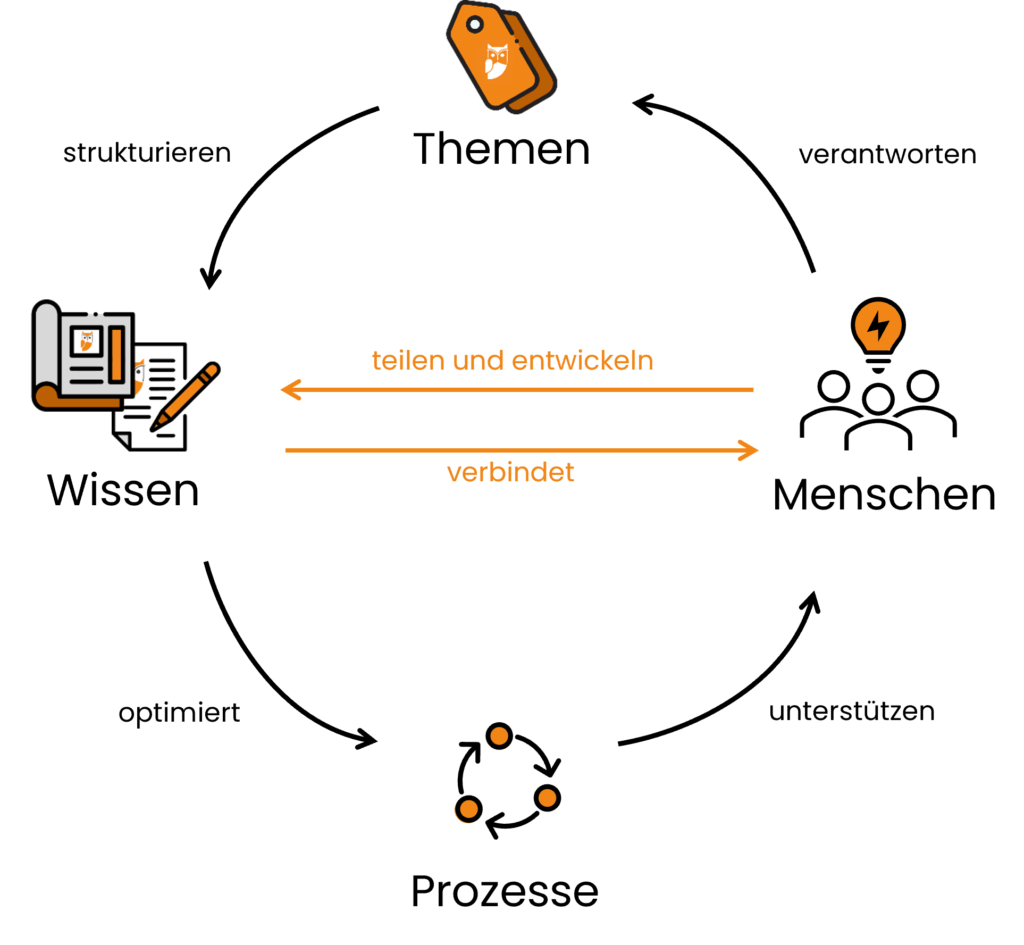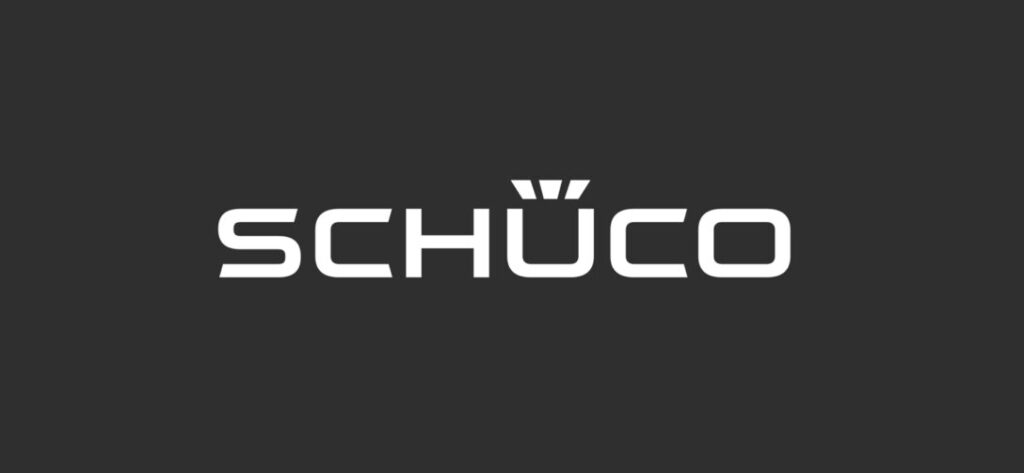How modern knowledge management succeeds in the company
Whether it's a home office or teams spread across the globe, today's working world requires a rethink when it comes to information exchange and knowledge management in the company. Because it is obvious that conventional methods such as circulars in paper form or the famous hallway radio simply no longer work. Instead, the task now is to develop intelligent concepts for knowledge management in the company that enable information to be exchanged regardless of location.
Remote work has now become part of everyday working life, and this trend will continue in the future. The market research institute Gartner, for example, expects mobile working to increase to 48 percent by 2030. It is hardly surprising that this will have an impact on the way we work: According to another study, 81 percent of employees will need more knowledge and information management solutions in their companies by 2020. What's more, 58 percent of respondents said that searching for and failing to find job-relevant information had more impact on key business metrics than in previous years. A lack of information also has a direct impact on employee productivity. The result: frustration among employees and customers whose inquiries cannot be answered due to the lack of information.
If you also consider that the efficient use of knowledge is increasingly becoming a competitive advantage, it quickly becomes clear that clever solutions are needed here that link the various departments with each other and cleverly combine knowledge sources such as e-mails, archives and wikis. But what exactly does "knowledge management in the enterprise" mean anyway?
What exactly is "knowledge management in the enterprise"?
Knowledge management" refers to all strategic and operational measures within a company that ensure optimal handling of knowledge. However, this goes far beyond the mere accumulation and management of information. It is true that the latter is the basic prerequisite for knowledge to emerge. However, it only becomes real know-how when we enrich the data by combining it with existing information, interpreting it and making it usable. Good knowledge management succeeds when knowledge is stored centrally in the company, presented in a clear and comprehensible manner, and employees can access it quickly and conveniently .
If you will, knowledge management is like the brain of an organization. Unlike a real thinking organ, however, this "corporate brain" is composed of many heads. But what is the best way to consolidate the know-how of all employees and, above all, how do you make it accessible to everyone?
How does optimal knowledge management work in the company?
How much easier would your daily work be if you could not only draw on your own wealth of experience, but also look into the heads of your company colleagues to tap into their knowledge? You would no longer have to engage in information management, memorize everything down to the last detail, or even ask your colleagues personally, let alone disrupt their work processes. Instead, you would simply open a door to a central knowledge base and be able to find the answer to your question in a matter of seconds. Wouldn't that be dreamy?
Well, apart from the fact that this is of course not so easily possible, it doesn't have to be. In some respects, it would probably also be detrimental to the actual idea of smart knowledge management in the company, because you would be overwhelmed with a flood of unfiltered information, some of which would be unnecessary for you. It therefore makes more sense to extract the knowledge that is valuable to you and to store and manage it in an external data repository. The solution here is "modern and dynamic knowledge management platforms".

This is how modern knowledge management works in the company:
- Simultaneous processing of information by several employees
- Automatic versioning and easy traceability of changes
- Mobility and accessibility for consuming information
- Proactive distribution of information to the right target groups
- Rethinking the workforce: transformation from pure knowledge carriers to (good) content creators
- Constant updating of technology in terms of security, availability and compliance
Why is knowledge management indispensable in the company?
"Knowledge is power." This dictum, which can be traced back to the English philosopher Francis Bacon, has not lost its meaning to this day. On the contrary: Applied to the modern working world, it could read: "Knowledge management is relevant to competition.
Because only if know-how maintenance in the company is carried out in a structured way can you get a complete overview of everything that is happening in the company and can be improved in the future (keyword: innovation management). But reduced competitiveness is by no means the only risk associated with inadequately implemented knowledge management.
The risks of a lack of knowledge management in the company:
- Real money loss due to inefficiency and wasted time
- Unnecessarily slow processes due to long searches for current information
- Employee dissatisfaction due to lack of information for daily work
- Frustrated customers whose inquiries cannot be answered due to lack of information
- Important knowledge leaves the company at some point (retirement, fluctuation, etc.)
- Jeopardizing or unnecessarily complicating the certification processes
- Missed opportunities for innovation
- Employees access outdated information and then take the wrong steps
At this point at the latest, it becomes clear that a well-established concept for managing information is indispensable for every company. A platform can provide valuable services here.
How can a platform support knowledge management in the company?
First and foremost, a platform for knowledge management in the company offers the possibility of conveying know-how in an innovative way, independent of location and across channels and departments . The knowledge, in turn, is available at any time - the users virtually serve themselves(pull principle) - but can also be distributed automatically(push principle). In this way, employees are always up to date. In addition, such a system can help with the following points:
Structuring the information
Above all, knowledge management means that the collected knowledge is not distributed across the company or stored in nested folder structures. Similar to a real filing cabinet, the same applies here: If you simply stuff all the information into it unsorted, it will be impossible to find later. Instead, you should put the collected material in (digital) boxes and label them neatly - of course with clear labels that also allow new colleagues to recognize what is in them right away. This in turn requires a suitable platform that supports employees in their daily work and makes it easier to search for information.
Role-specific distribution of knowledge
Some topics are only relevant for a specific team or project group. It therefore makes sense to establish a process in the company that ensures role-specific management and distribution of knowledge. An intelligent platform can take over the task of document control.
Keeping the information up to date
The great advantage of a collaborative knowledge management platform is that it can be used to keep existing information in the company up to date. For example, a reporting system can be used to indicate that a contribution contains outdated information. The prerequisite for this, however, is that employees are given the opportunity to actively participate in regular updates - and that they do so.
Advantages of a knowledge management platform in the company

For the company:
- easy access to know-how through documentation
- Significantly increased visibility of success and failure through sustainable documentation
- Preservation of knowledge and existing competencies - even in the event of the departure of knowledge carriers
- Better customer service thanks to quality improvement
- Increased employee satisfaction
- Faster time-to-market through improved cross-departmental information exchange
- Fewer bottlenecks due to reduced dependence on supervisors and others
- Avoid duplication of work: answers once found are documented and available for all in the same place
- Potentiation of know-how: Locating, documenting and distributing individual knowledge and competencies that can significantly advance the company.

For employees:
- Faster access to old and new know-how - for everyone
- Bundling of knowledge of all employees in a central location
- Easier collaboration across departments and locations
- Improved communication
- Continuous and automatic training
- Find solutions faster
- Possibility to consume knowledge in a demand-oriented and role-specific manner
- Faster and more independent training of new colleagues
- Faster identification of relevant contacts for questions and problems that arise
Tips and tricks for the successful implementation of knowledge management platforms in the company
The following ten tips will help you to successfully introduce a suitable knowledge management platform in your company:
Tip 1: Create a central filing system
Whether in emails, on the server, in the cloud, in Microsoft Office documents or in support tickets: Information can be found in more and more different places in the organization. In order to maintain an overview, it is necessary to establish a central digital filing system into which employees enter their knowledge.
Tip 2: Organize existing data in a meaningful way
To ensure that new employees can also quickly find their way around, a sensible information architecture is required. Create folders for documents, images, videos, etc. In addition, the Konmari method of "tidying up according to plan" is recommended - also for effective knowledge management in the company. Each piece of information is given its own unique place and a filing system that suits its purpose. All information that is not required is sorted out in this way. It is important to ensure that information is organized according to specific categories such as "manuals" or "templates" and not according to departments or teams.
Tip 3: Choose a platform that suits you
A platform should cover your company's requirements and also be easy to deploy and intuitive to use. Ask yourself the following questions before purchasing:
- Can new knowledge be quickly incorporated into the software?
- Does the platform allow sharing of information with colleagues?
- Is there a search function?
- Is the system scalable so that it can grow with the business?
Tip 4: Create group diversity and a corporate culture of knowledge sharing
Proper knowledge management in the company will only succeed if knowledge is seen as a general asset - and not as personal property to be defended. Therefore, encourage the sharing of know-how. The best way to do this is for management itself - and on an ongoing basis! - sets a good example.
Encourage diversity in the people and processes involved. Involve many people with different perspectives, knowledge and experience - even from different generations. The resulting creative chaos can sometimes produce the most exciting results.
Tip 5: Provide appropriate resources
Empower your employees to share their knowledge. Provide them with the appropriate tools and, if necessary, assign colleagues from corporate communications to assist them. Especially important: Make sure that your employees have enough time for knowledge management in their normal day-to-day work. Create appropriate roles whose daily business includes the transfer of know-how and who take on these tasks:
- Providing employees with important information,
- Training colleagues how to best use the knowledge provided,
- Use knowledge to enable value-adding processes in the company.
Whether a separate role is created for this or whether certain employees simply take this on as additional duties is up to you.
Tip 6: Always keep knowledge up to date
If team members find only outdated information in the company's knowledge management system, not only is frustration pre-programmed. They will also soon look for other ways to get the information they are looking for. So create smart ways to keep information up to date so that the knowledge platform is used willingly and regularly.
Tip 7: Create target group-specific know-how
Knowledge provided must be useful to consumers. Therefore, make sure that the way in which information, tips or experiences are passed on is geared to the respective group of people. Scientific papers may be appropriate for the R&D department, but practical video tutorials may be more appropriate for manufacturing. Find out what types of know-how exist in the company, for which target groups it is intended and in what form it is best presented. From this, guidelines for the preparation of information can be derived, which knowledge carriers can use as a guide.
Tip 8: Create a whole knowledge ecosystem, using modern formats
A suitable knowledge management platform should be easy to link with a wide variety of systems in the company and allow all employees to access know-how that is relevant to them. The latter should also be retrievable on a mobile basis. Therefore, offer a whole range of possibilities to inform (yourself and others): the classic employee newspaper is just as justified here as the e-newsletter or the knowledge library in teams. In addition to written documentation, use user-friendly modern formats that make it easier for your team members to acquire knowledge - be it photos, graphics, diagrams, video clips, interactive training or virtual reality.
Tip 9: Offer an info service
To ensure that knowledge transfer is continuous, timely and efficient, it makes sense to alert employees specifically when there is new information. Automated e-mails or push messages ensure that team members are also aware of the news in their day-to-day business. Set up the system in such a way that each person only receives information required for him/her and thus does not waste time unnecessarily.
Tip 10: End silo thinking, promote interpersonal communication in the company
Knowledge management is not just a question of digital processing. Interpersonal exchange is at least as important. While there may be a lively flow of information within departments, this often does not take place across departmental boundaries. Start with small changes to eliminate silo thinking: Train your employees how to jointly edit Word or Excel documents, add inline comments or integrate colleagues into communication processes via the @ symbol.
Conclusion: Knowledge management in the company - a real competitive advantage
Knowledge is one of the most valuable resources in a company. What's more, information exchange is a decisive factor for team performance, as a meta-analysis based on 43 primary studies recently showed. But to ensure that the raw material "knowledge" can also be put to good use for everyone in the new world of work, smart information management must be practiced in the company. This means not only bringing team members on board as knowledge carriers. It is also important to create the right structures and conditions for a continuous process of exchanging and maintaining information. A knowledge management platform can often provide valuable services here. Although many companies shy away from such an investment, it is worth the financial and personnel effort. After all, many historically grown structures and processes exist only for the convenience of the company and have long since ceased to be effective. A new system that helps the company to make profitable and meaningful use of the abundant knowledge available will become a competitive advantage in the long term.
More recent contributions


